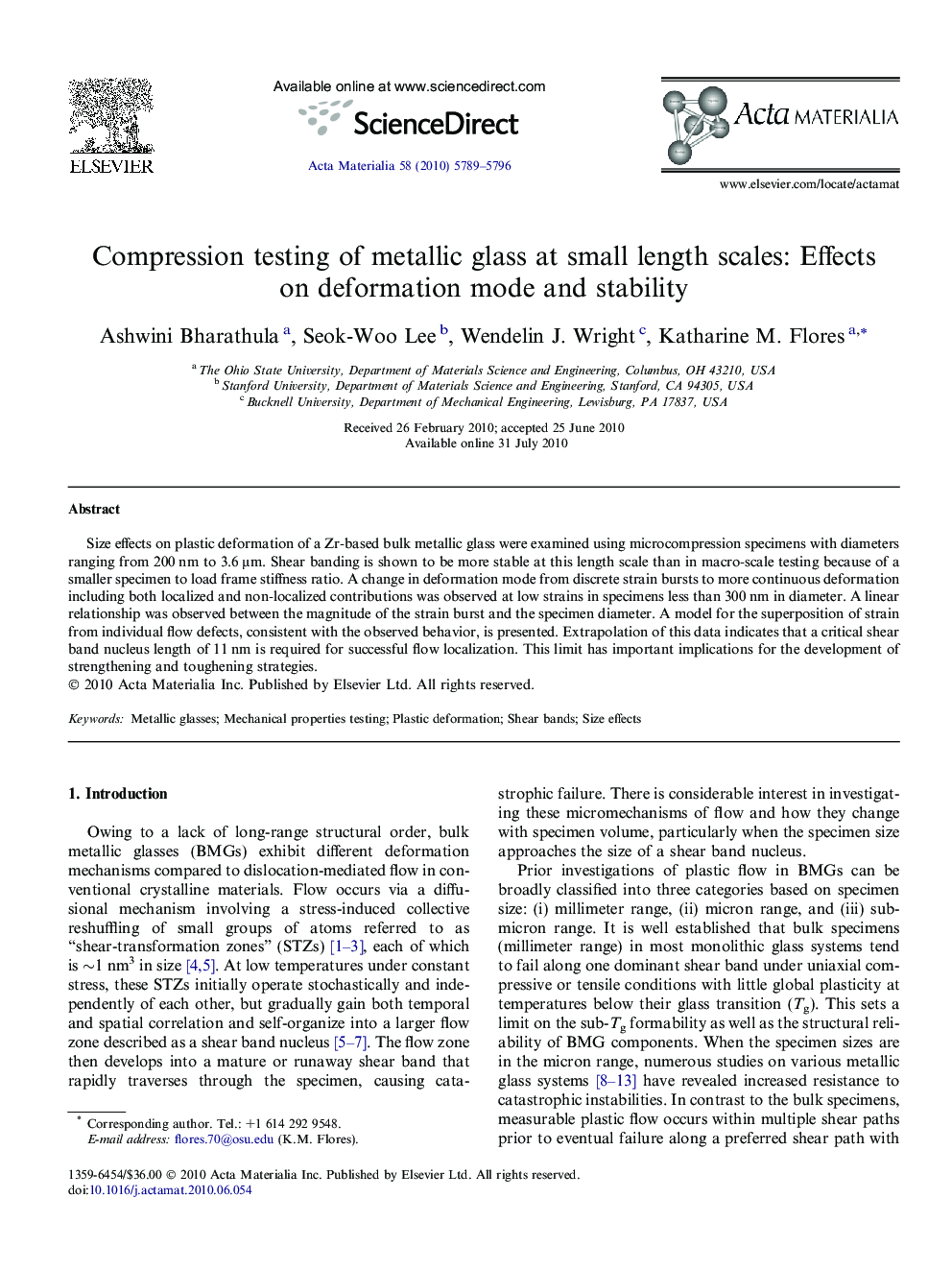| Article ID | Journal | Published Year | Pages | File Type |
|---|---|---|---|---|
| 10620729 | Acta Materialia | 2010 | 8 Pages |
Abstract
Size effects on plastic deformation of a Zr-based bulk metallic glass were examined using microcompression specimens with diameters ranging from 200 nm to 3.6 μm. Shear banding is shown to be more stable at this length scale than in macro-scale testing because of a smaller specimen to load frame stiffness ratio. A change in deformation mode from discrete strain bursts to more continuous deformation including both localized and non-localized contributions was observed at low strains in specimens less than 300 nm in diameter. A linear relationship was observed between the magnitude of the strain burst and the specimen diameter. A model for the superposition of strain from individual flow defects, consistent with the observed behavior, is presented. Extrapolation of this data indicates that a critical shear band nucleus length of 11 nm is required for successful flow localization. This limit has important implications for the development of strengthening and toughening strategies.
Related Topics
Physical Sciences and Engineering
Materials Science
Ceramics and Composites
Authors
Ashwini Bharathula, Seok-Woo Lee, Wendelin J. Wright, Katharine M. Flores,
